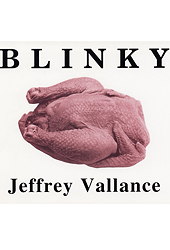Weird Universe Blog — April 1, 2024
Peanut Butter with No Jelly Candy Bar
Any product endorsed by Vincent Price is aces with me.
Posted By: Paul - Mon Apr 01, 2024 -
Comments (1)
Category: Advertising | Candy | 1970s
March 31, 2024
Worst Easter Pageant Ever

Somerset Daily American - Apr 8, 2004
Posted By: Alex - Sun Mar 31, 2024 -
Comments (2)
Category: Religion | 2000s | Easter
Happy Easter 2024!


Posted By: Paul - Sun Mar 31, 2024 -
Comments (1)
Category: Anthropomorphism | Holidays | Twentieth Century
March 30, 2024
Estate Willed by Talkie
Video wills have become quite common, but they weren't back in 1931. So the unnamed testator described below was breaking new ground by creating one (or rather, a filmed will).I particularly like the detail that he left instructions on where everyone should sit while watching the film, so that he could look at each person directly from the grave.
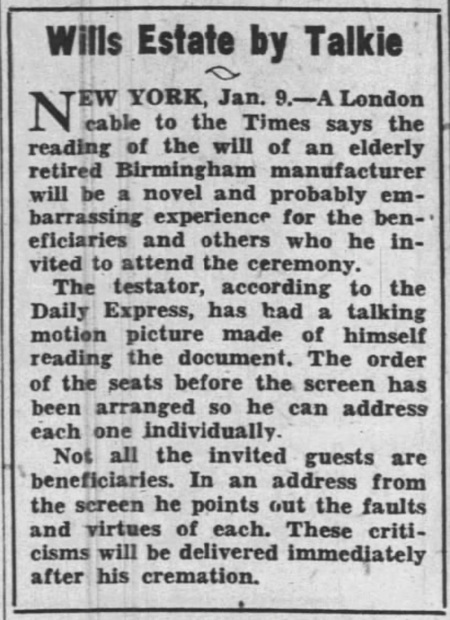
Wichita Eagle - Jan 10, 1931
Posted By: Alex - Sat Mar 30, 2024 -
Comments (0)
Category: Death | Law | Movies | 1930s
The Radioactive Pup of Bikini Atoll
Operation Crossroads page at Wikipedia.

Posted By: Paul - Sat Mar 30, 2024 -
Comments (0)
Category: Military | Atomic Power and Other Nuclear Matters | Dogs | 1940s | South Pacific
March 29, 2024
A brief history of mass-production shaving machines
Around 1780: "An anonymous British printmaker, perhaps from Birmingham, issued a satire of mechanization and factories occuring during the Industrial Revolution, in the form of an imaginery 'New Shaving Machine, whereby a number of persons may be done at the same time with expedition, ease, and safety.'" (text from historyofinformation.com)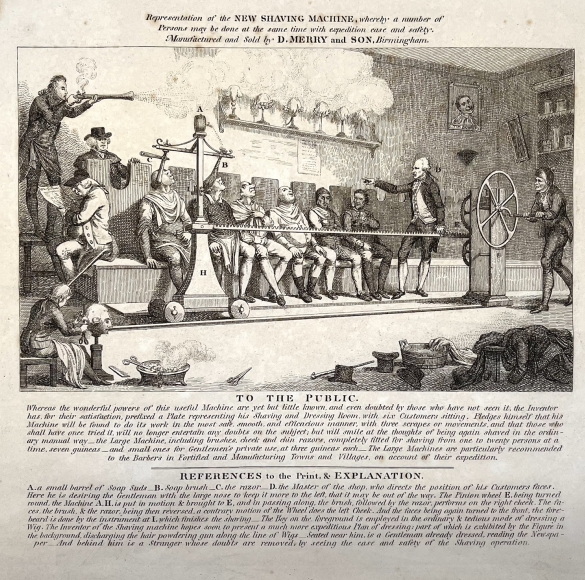
Around 1825: "British illustrator and caricaturist Robert Seymour... issued Shaving by Steam... In his creation of this print Seymour was undoubtedly inspired by an earlier anonymous print entitled 'New Shaving Machine.' The sign above the door on the right in Seymour's image announces 'Patent Shavograph!!!'" (text from historyofinformation.com)
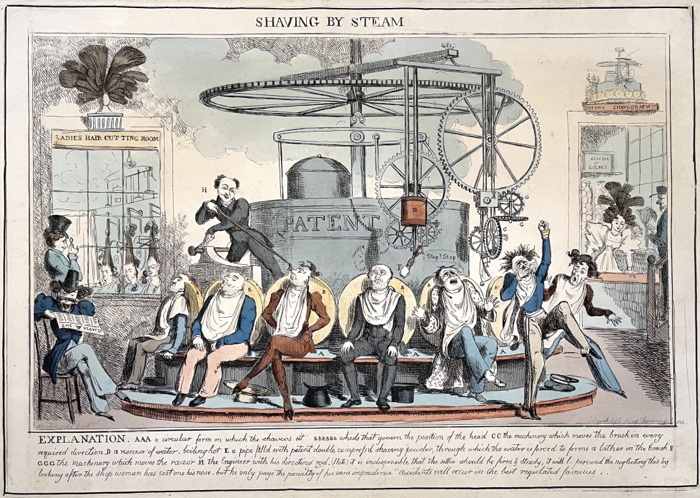
Oct 1960: English comedian Eric Sykes built a working "New Shaving Machine" (modeled from the 1780 print) on a pilot show for a proposed television series called 'Brainwaves.' The premise of the show was recreating strange old-time inventions. However, the show never aired.
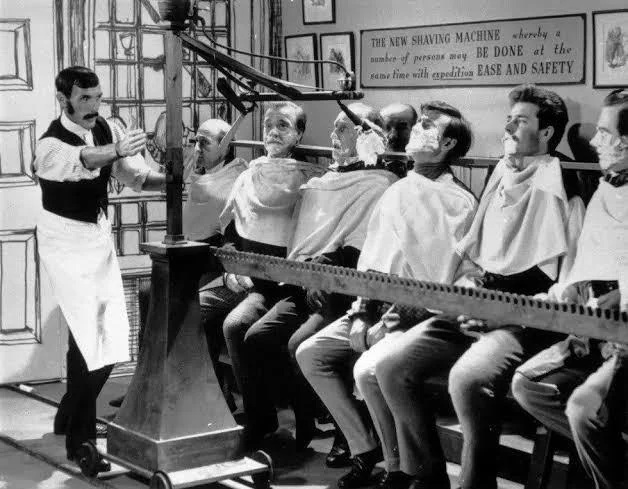
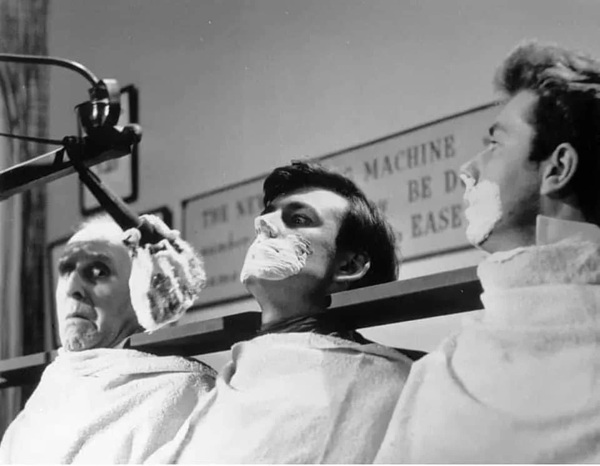
images source: vintag.es
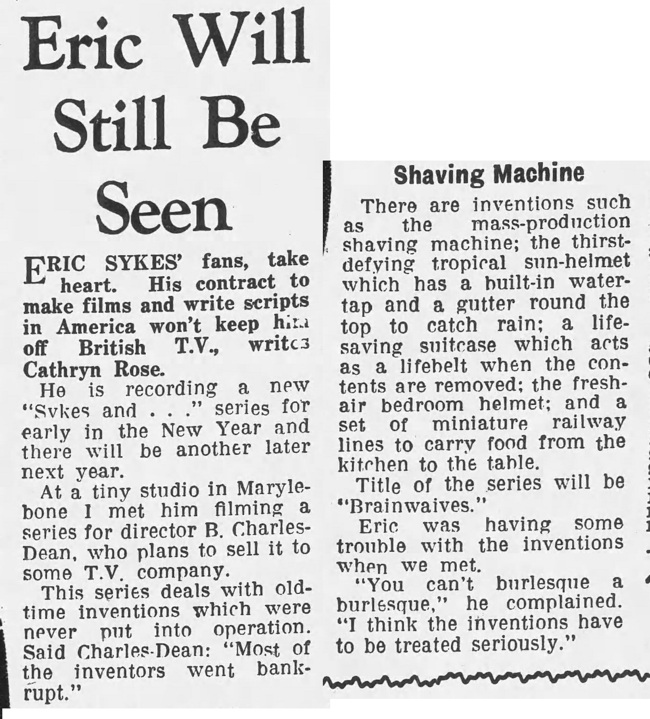
Lincolnshire Echo - Sep 29, 1960
History via reddit user KBHoleN1
Posted By: Alex - Fri Mar 29, 2024 -
Comments (0)
Category: Technology | Satire
Huey Smith and the Clowns, “Popeye”
The musician's Wikipedia page.
Posted By: Paul - Fri Mar 29, 2024 -
Comments (1)
Category: Music | Comics | 1960s | Dance
March 28, 2024
Miss British Reinforced Concrete
The title was supposed to be bestowed on an employee of British Reinforced Concrete, but it was given to non-employee Nanette Keay by mistake:"They wouldn't let me leave and so I had to walk past the judges. I was absolutely astonished at winning."
Despite not being an official contestant, they let her keep the title.


Glasgow Daily Record - Apr 6, 1953
Posted By: Alex - Thu Mar 28, 2024 -
Comments (1)
Category: Awards, Prizes, Competitions and Contests | 1940s
Dance of the Simpleton
Since the silent dance video has no soundtrack, but is ostensibly meant to be accompanied by a Chopin Waltz, I suggest playing "The Minute Waltz" simultaneously! If you click the dance video, then the music video, they sync up nicely, just like THE DARK SIDE OF THE RAINBOW.
Posted By: Paul - Thu Mar 28, 2024 -
Comments (0)
Category: Eccentrics | Spastic, Uncontrolled, Awkward and Herky-Jerky Movements | 1920s | Dance
March 27, 2024
Is it marijuana or alfalfa?
Peter Hlookoff had an unusual strategy to avoid being convicted for possession of marijuana — he always carried a container of alfalfa with him.His reasoning was that alfalfa and marijuana smell similar (so he claimed). So if the police ever arrested him for possession of marijuana he could claim that it was actually alfalfa they had smelled (or seen him smoking).
This strategy was put to the test in Dec 1967 when the police raided his apartment and arrested him for smoking pot. During the subsequent court case his defense led to the magistrate arranging for a court employee to smoke marijuana so that its smell could be compared to alfalfa.
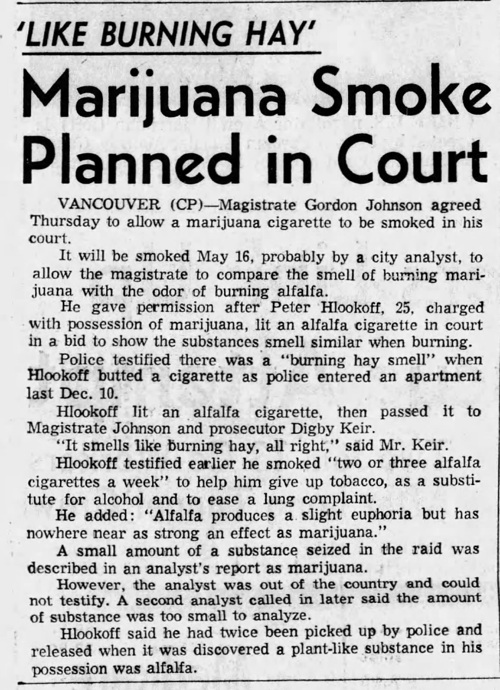
Victoria Times Colonist - May 10, 1968
Unfortunately the courtroom experiment was cancelled before it took place, and the magistrate ended up finding Hlookoff guilty. He didn't buy Hlookoff's follow-up argument that if, perhaps, it had been marijuana he was smoking then someone must have (without his knowledge) put marijuana in his alfalfa container.
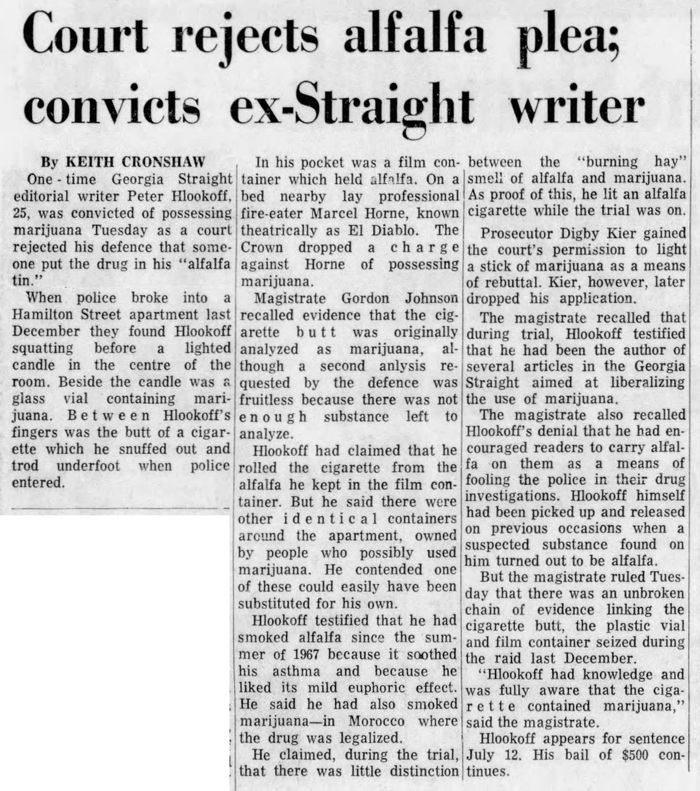
The Vancouver Province - July 3, 1968
Hlookoff's roommate, Marcel Horne (a professional firebreather whose stage name was 'El Diablo'), later wrote an autobiography in which he revealed that, yeah, they were absolutely smoking pot when the police raided their apartment:
We were rapping away very stoned, when we heard someone coming up the stairs. The next thing we knew two cops in uniform walked into the room. Peter tried to drop the roach but the cop saw him. I was too stoned to think properly so I just lay there watching the nightmare. The cops put us up against the wall and frisked us. "Who does the marijuana belong to?" We both answered, "What marijuana?"
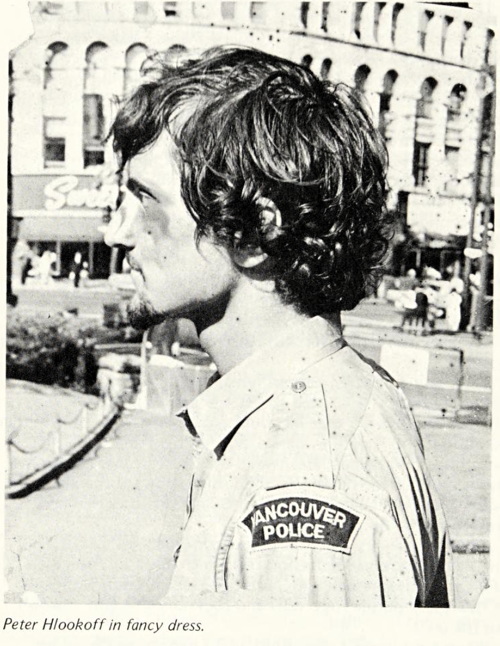
image source: Annals of the Firebreather (1973), by Marcel Horne
Posted By: Alex - Wed Mar 27, 2024 -
Comments (2)
Category: Drugs | Smoking and Tobacco | Law | 1960s



